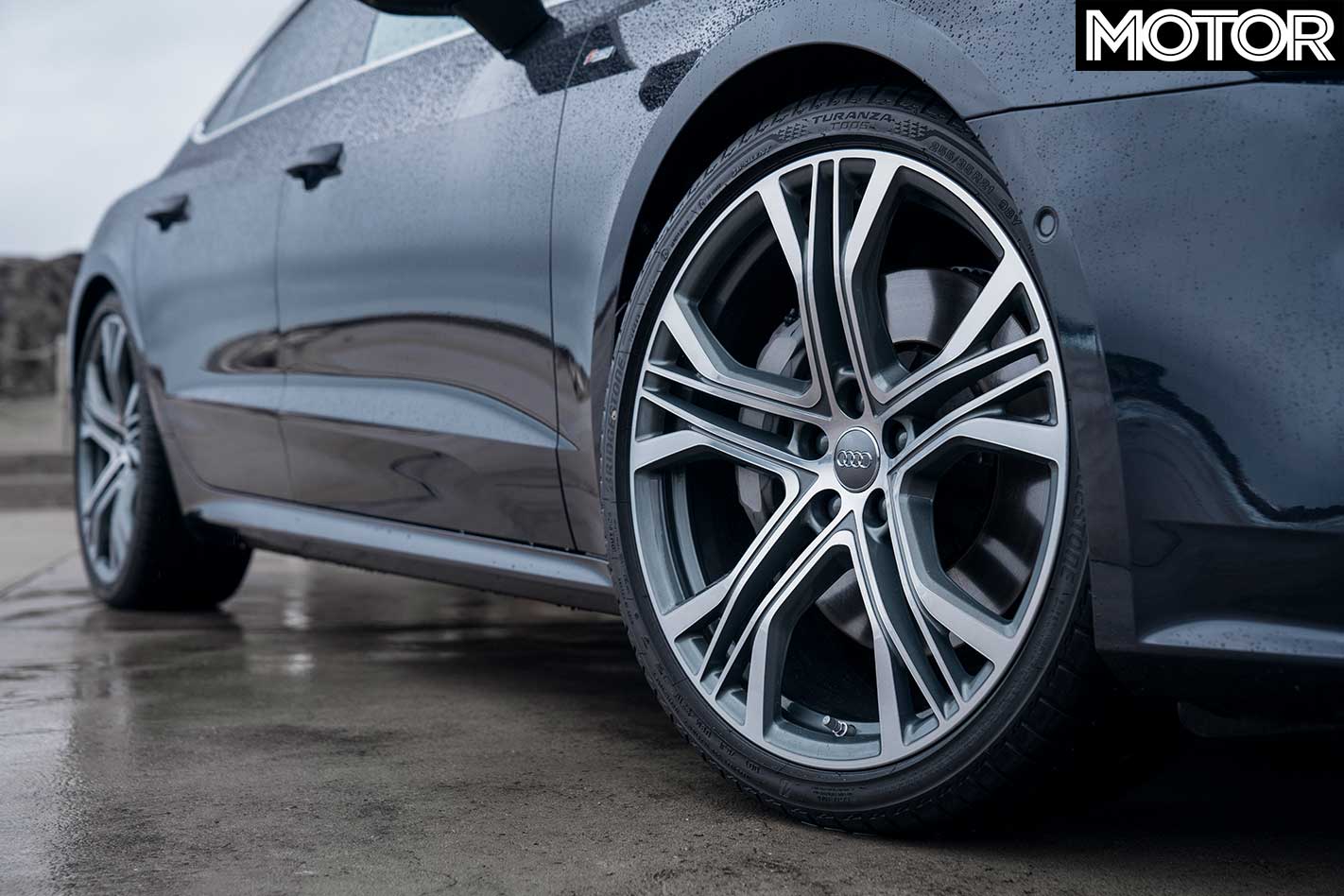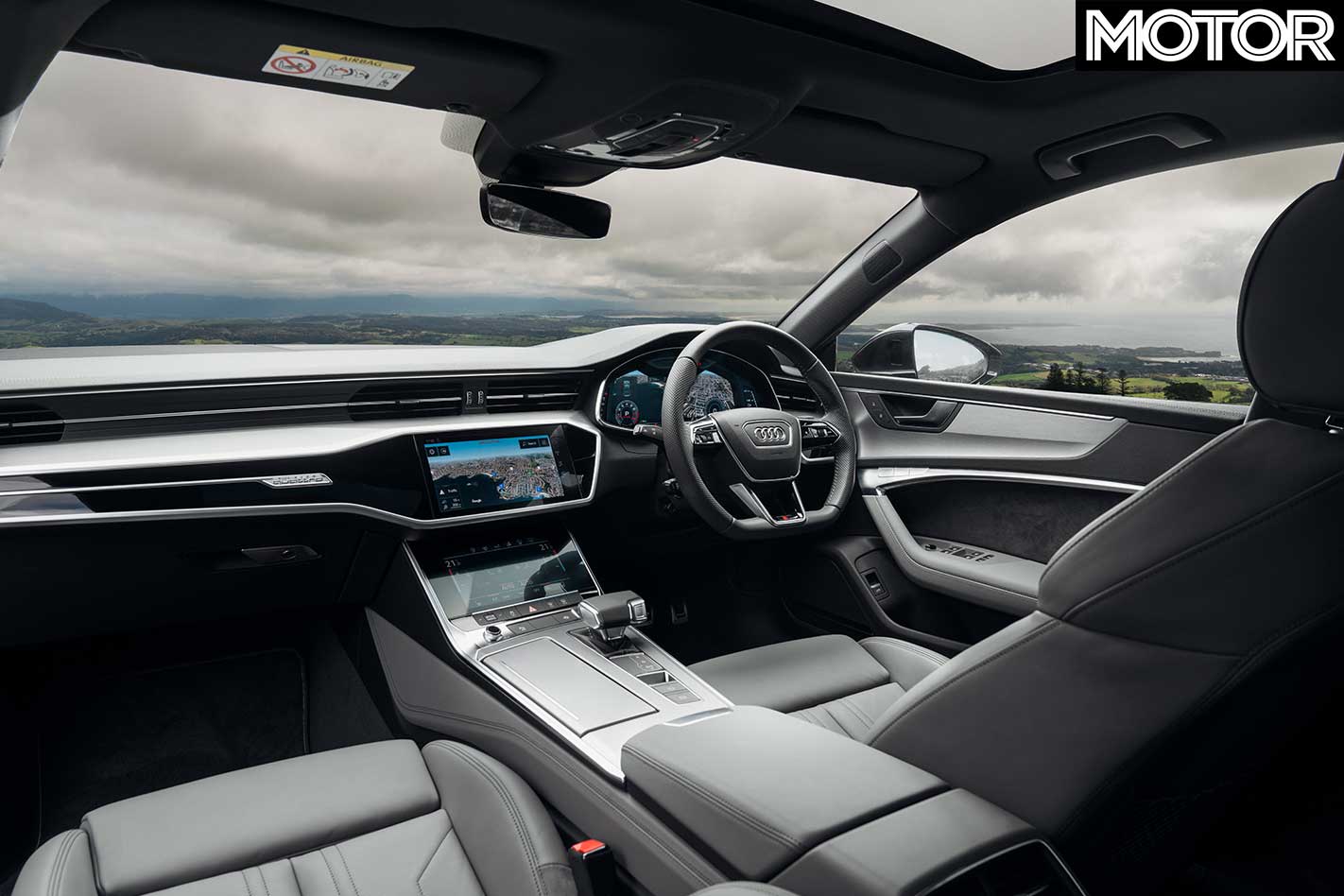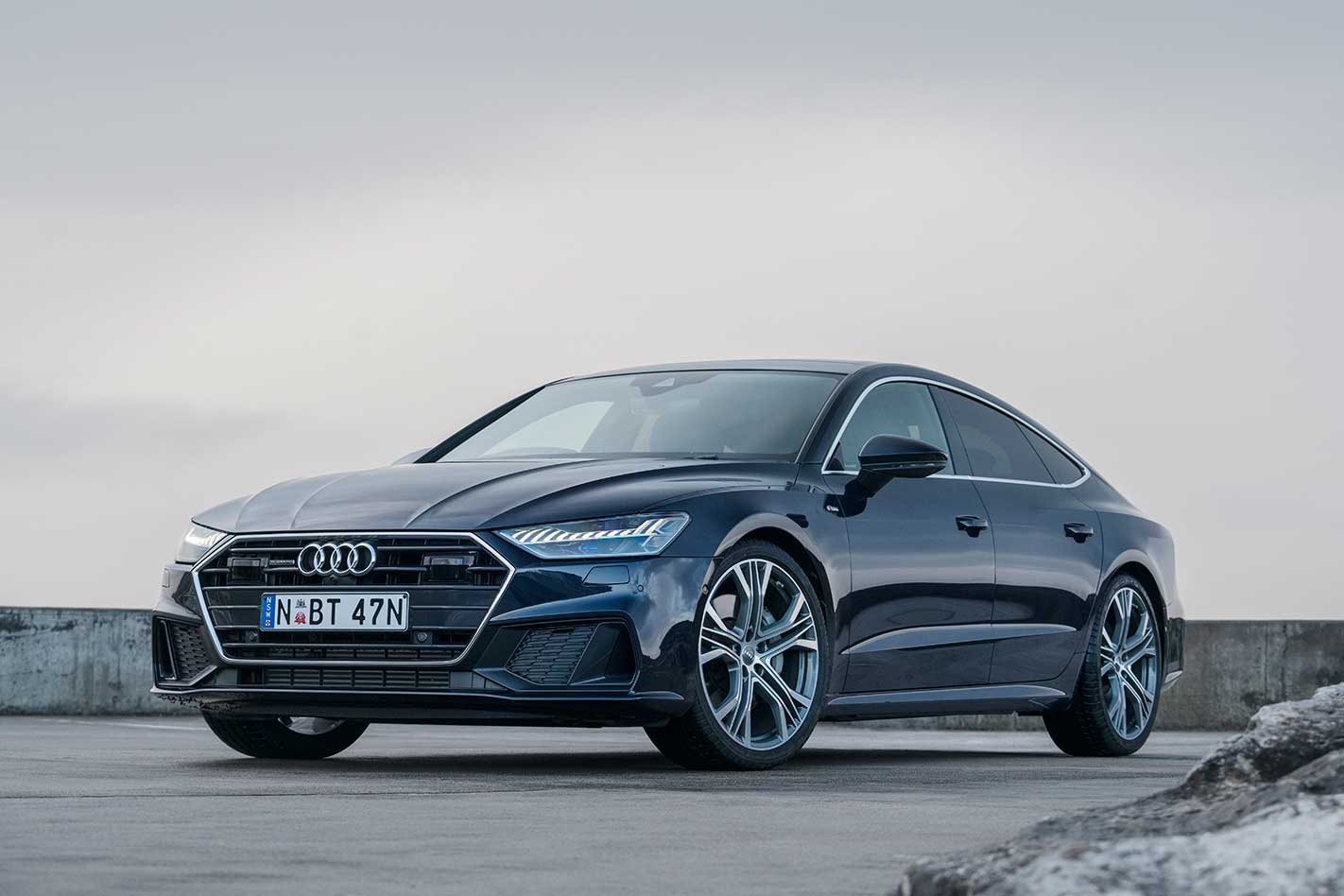Audi knows if you’re going to be late then you better make a good entrance.
In 2012 it entered the sedan-cum-coupe category with the A7, a stylish hatchback alternative to the established Mercedes-Benz CLS. Quickly, though, it found the Benz had its measure.

Now the second generation A7 rings the bell on round two. It faces a tougher challenge against a revamped mild-hybrid CLS while Porsche’s Panamera and the BMW 6 Series Gran Turismo have since joined the fray.
But it heeds the battle and uses technologies from its new A8. The A7 is based on the same MLB Evo platform to make it lighter and stiffer. The wheelbase lengthens by 12mm to boost interior space, while its overall length has shrunk.
It wears battle-readiness on its sleeves, too. Its tracks are widened under aggressively pumped guards. A new power dome bonnet looms above a wider one-piece front grille and V6 models come with an S-line specific front bumper.

A fleet of new engines start with a 180kW four-cylinder petrol, progressing to a 210kW V6 diesel and then a 250kW V6 petrol. We’re in the latter, now named the 55 TFSI, until the diesel (50 TDI) and four-cylinder (45 TFSI) arrive next year.
It swaps the old 228kW supercharged 3.0-litre V6 for a new turbocharged unit closely related to the S4’s. Like the S4 its cylinder heads are flipped so exhaust gases flow inwards to the twin-scroll turbo in its vee. It produces 500Nm between 1370rpm to 4500rpm.
It opens fire with brisk rather than rapid acceleration. It mates Audi’s ‘Ultra’ part-time all-wheel drive to 255mm-wide Pirellis. Combined with an improved seven-speed dual clutch they make a claimed 5.3sec sprint from 0 to 100km/h believable.

The full-throttle stuff produces less noise than expected, except for an occasional high-pitched whir from the new 48-volt powered alternator. It offers no extra power, just quicker engine restarts to allow to eco-coasting or earlier start-stop engagement.
Luckily, the car’s handling is more involving. Even though it’s more a gran tourer than apex-carver, it’s a good sign of things to come for S and RS versions. By mounting the front subframe rigidly to the chassis its steering has become more tactile.
There’s more grip than you expect when leaning into a corner, too, especially when considering its size and the comfort on offer. The upgraded rear five-link setup also helps it hug its line, keeping 1815kg in check. An optional all-wheel steering package promises to further hone its agility, but we’ll have to see whether it’s worth the extra $4200 when we drive it.

Aussie cars shun the base 18s offered in Europe for 20-inch wheels as standard. You can then upgrade them to 21-inches in an $8000 Premium Plus package, reducing the tire aspect ratio from 45 to 30. The pack, part of a more streamlined approach to customisation, also includes air suspension that manages to cushion and control the car’s mass simultaneously very well.
It also seems to have more lasers, sonar and infrared cameras than an inter-continental submarine for safety. Meanwhile a heads up display above Audi’s familiar 12.3-inch Virtual Cockpit are joined by 10.1-inch and 8.6-inch displays in the centre stack.
Thankfully, the bigger screen handles navigation, media, connectivity and drive mode selection, while below is reserved for HVAC controls or doubling as a scribble pad. They click satisfyingly with haptic feedback, but the real draw is the new space found by deleting a multimedia controller wheel.

The slick driver-focused interior is only let down by the seats that lack useful bolster. But the fact it needs some shows how far its dynamics have come, and at no cost to comfort.
It won’t be the most memorable car we drive this year, even with the pokey V6, but to be fair that’s not what anyone should expect from it. Bring its competition into focus and the A7’s charms are clearer. Even with the expensive Premium Plus package its $131,900 base undercuts rivals from Mercedes-Benz, BMW and Porsche.
The chassis, too, promises some delicious S and RS versions down the track. Add those alluring looks and we’re inclined to bump its first rating to four stars. It’s relative, of course, and might change after a more thorough drive, but for now it looks like the A7 has made the entrance it intended all along.

2019 AUDI A7 Sportback 55 TFSI SPECS Engine: 2995cc V6, DOHC, 24v, turbo Power: 250kW @ 5000-6400rpm Torque: 500Nm @ 1800-4800rpm Transmission: 7-speed dual clutch 0-100km/h: 5.3sec (claimed) Weight: 1815kg Price: $131,900 Rating: 4 out of 5 stars






